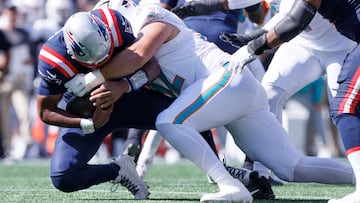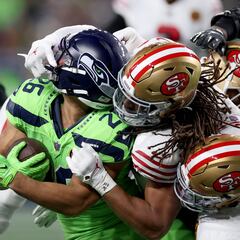What is targeting in football? The rule to protect offensive position players explained
The football targeting rule aims to enhance player safety by penalizing dangerous hits to minimize head and neck injuries, particularly concussions.


Football is an intense and physical sport that can be potentially dangerous, so player safety is always a priority. The targeting rule is one of the most important rules introduced in recent years to protect players from serious injury.
The rule, which is designed to minimize head and neck injuries, particularly concussions, by penalizing dangerous hits, is aimed at enhancing player safety.
Targeting by rule pic.twitter.com/gujsuSoJ1L
— Kurt Benkert (@KurtBenkert) January 8, 2024
This rule has always sparked ongoing debates, especially around the gray areas in its application. Rule 9-1-3 addresses crown-of-the-helmet hits on runners (non-defenseless players) and continues to draw attention, especially in ambiguous situations. The core principle behind targeting is to protect defenseless players, such as quarterbacks just after releasing the ball or receivers stretching for a catch, for whom most agree ejections are justified. However, calls involving non-defenseless players often lead to controversy.
A classic targeting look is when a player launches himself at the quarterback and lowers his head; that’s targeting. Those hits are flagged to protect both the player and the tackler, emphasizing that no coach teaches such tackling techniques. While forceful hits are more accessible to identify, the judgment of “forceful contact” often leads to debate.
The most contentious issue arises when officials are tasked with determining whether a player is defenseless, and the only valid call for targeting would be crown-of-the-helmet contact. The human element in officiating leads to occasional mistakes but emphasizes continuous efforts to improve consistency.
What could be possible modifications to the “targeting rule”?
Is there any movement within the rules committee to reevaluate the targeting rule, particularly when ejections seem harsh?
Related stories
The rules committee will review the rule, noting that while changes have been made to minimize gray areas, such as requiring all aspects of targeting to be confirmed on replay, there is still room for improvement.
One possible modification being floated is the introduction of a “flagrant 1″ and “flagrant 2″ distinction, similar to basketball, where only the most egregious hits would result in ejections. This could address concerns over ejecting players for non-malicious plays while maintaining safety protocols.

